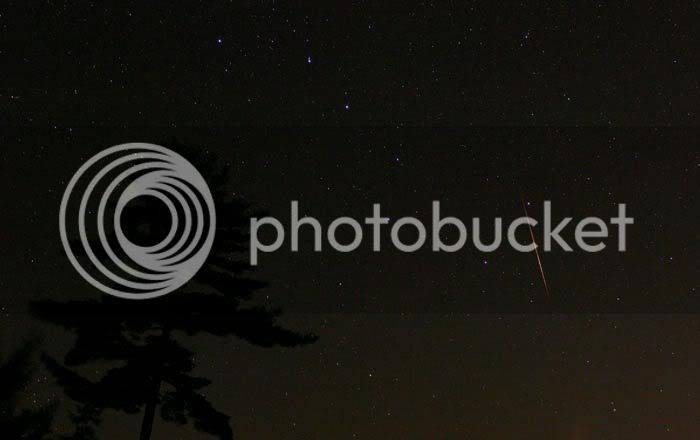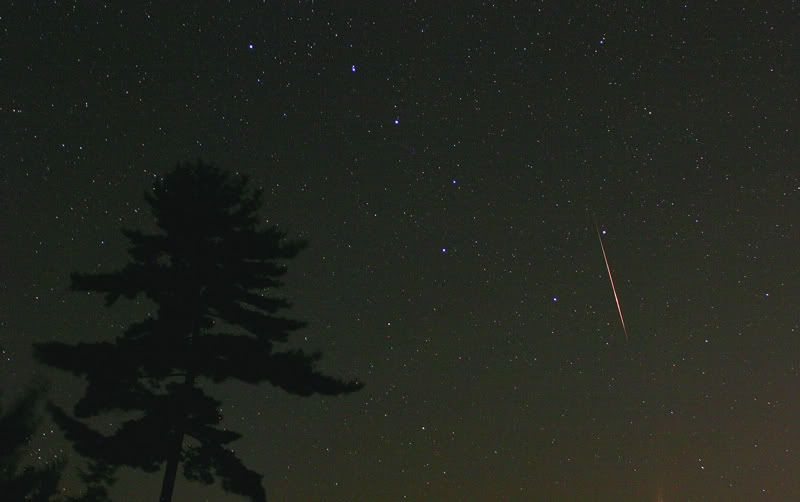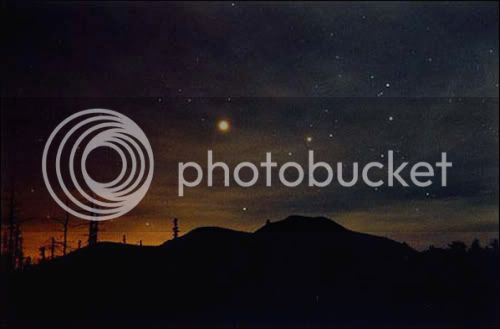Darren, very cool work. Those moons can be seen in binoculars. Since you are viewing Jupiter lately, and since this thread has also mentioned the now perennial "Mars hoax"...
Jupiter is now in Scorpios, very close (from our viewpoint) to where Mars was a few years back, when it was at a point as close to Earth as it can get. This happens once in 17,000 years (or something like that). Earth passes Mars every 2 1/2 years, but each pass is at a different distance, due to our non-circular orbits.
Here is a shot from the summer(2002?) when Mars was at it's brightest as any of us will ever see. Hope you didn't miss it because it was stunning. It was technically just dimmer than Venus at her brightest, but the disk size was HUGE!!!. here, Mars floats above Scorpios over Mt. Passaconaway. This image is recommended with cognac, Enya and incense...
If you know the stars, you can see Antares, the heart of the scorpion, to the right of Mars. Antares is one of the brightest and largest stars we can see. Mars is usually nowhere near this big. It was wonderful to have another huge wanderer that rivals Venus and Jupiter.
happy Trails








